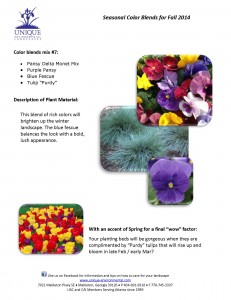Two decades of Southeastern Flower Show and Atlanta Home Show
Unique Environmental Landscapes took the top award for medium size booths at the Atlanta Home & Garden Show held at the Cobb Galleria March 20-22, 2015. Unique’s eye-catching garden was a popular spot all three days of the show, attracting the attention of landscape design/install seeking residential patrons. Highlights of the garden included a custom built natural waterfall pumping 4800 gallons of water per hour, a wood burning fireplace, Coral Bark Japanese Maple which was beautifully accented with uplights. A good deal of the plant material in the garden was selected from the Southern Living Plant Collection, a favorite in Unique’s plant palette for the Atlanta landscapes. To finish off the garden, Unique placed beautiful (and comfortable) furniture from Casual Image on Belgrade’s Lafitte Rustic Slab paver patio so patrons could picture themselves enjoying this beautiful landscape garden.
























